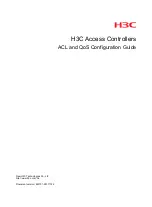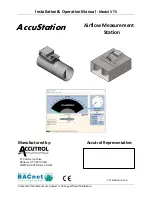
16
www.balmar.net / Customer Service: +1 (360) 435-6100 x1 / Technical Support: +1 (360) 435-6100 x3
Tech Service is available Monday - Friday (8:30am - 7:30pm EST)
Voltage Regulator Testing
Set your voltmeter to 24VDC and connect the negative lead to SYSTEM GROUND.
With the ignition turned OFF, check voltage on the RED (power), BLUE (field) and BROWN (ignition) wires BY
INSERTING YOUR POSITIVE PROBE INTO THE TOP OF THE FOUR-WIRE PLUG AT THE REGULATOR. The
probe will slip in alongside the wire in the top of the plug. DO NOT disconnect the plug from the regulator while
testing.
Voltages should be as follow:
• RED wire equal to battery voltage
• BLUE wire zero volts
• BROWN wire zero volts
With the ignition in the ON position (engine not running), check voltage on the RED (power), BLUE (field) and
BROWN (ignition) wires in the regulator plug:
• RED wire equal to battery voltage
• BLUE wire between 4V and 22V
• BROWN wire equal to battery voltage
PLEASE NOTE: In systems where the ignition (BROWN) wire is supplied power via an oil pressure switch, jump
directly from test #1 to test #3.
With the ignition in the ON position (with engine running at 1,400 rpm fast idle), check voltage on the RED (power),
BLUE (field) and BROWN (ignition) wires in the regulator plug. Voltages should be as follow:
• RED wire equal to battery voltage
• BLUE wire between 4V and 22V
• BROWN wire equal to battery voltage
PLEASE NOTE: SYSTEM VOLTAGE MUST BE ABOVE 22V FOR FIELD OUTPUT TO OCCUR. ENSURE THAT
VOLTAGE IS ABOVE 22V WHEN TESTING SYSTEM.
If voltage is not present on the RED or BROWN wires, the regulator will not work. If voltage is as expected at the
RED and BROWN wires, and there is zero, or an unexpected voltage reading at the BLUE wire, contact our technical
support staff at (360) 435-6100, or e-mail us at [email protected].
If all voltages at the regulator meet expectations, yet the alternator is not producing charging current, test the alternator.
The following tests are recommended for determining alternator functionality.
Alternator Testing
TEST #1- The following test is used to isolate the alternator and determine if the failure is a result of the alternator.
Once again, testing at either the alternator or regulator is only effective if the wiring, fusing and batteries have been
determined to be in correct working order. The alternator and regulator can be tested for function by determining if a
magnetic field exists at the alternator’s pulley shaft or rear bearing. To test:
1. With the ignition in the OFF position, place the tip of a non-magnetic steel screwdriver near the nut on the
pulley shaft or near the rear bearing of the alternator. There should be no evidence of a magnetic field pulling
the screwdriver toward the alternator. (A slight amount of magnetism may be present, due to residual voltage
in the alternator.)
2. Engage the ignition, without starting the engine, to activate the voltage regulator. If an oil pressure switch is
used, a jumper between the RED and BROWN wires in the Ford-style plug will activate the regulator.





































